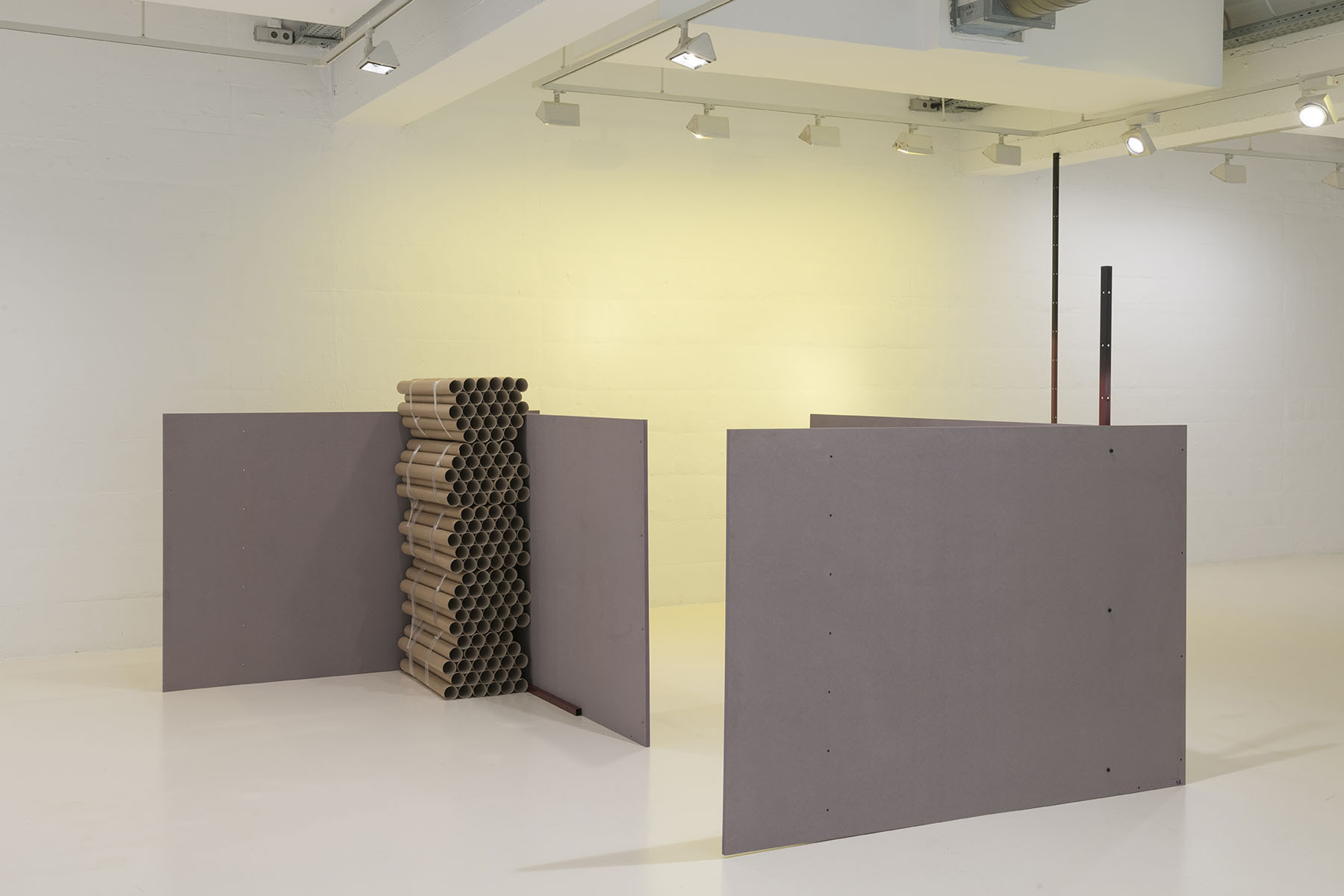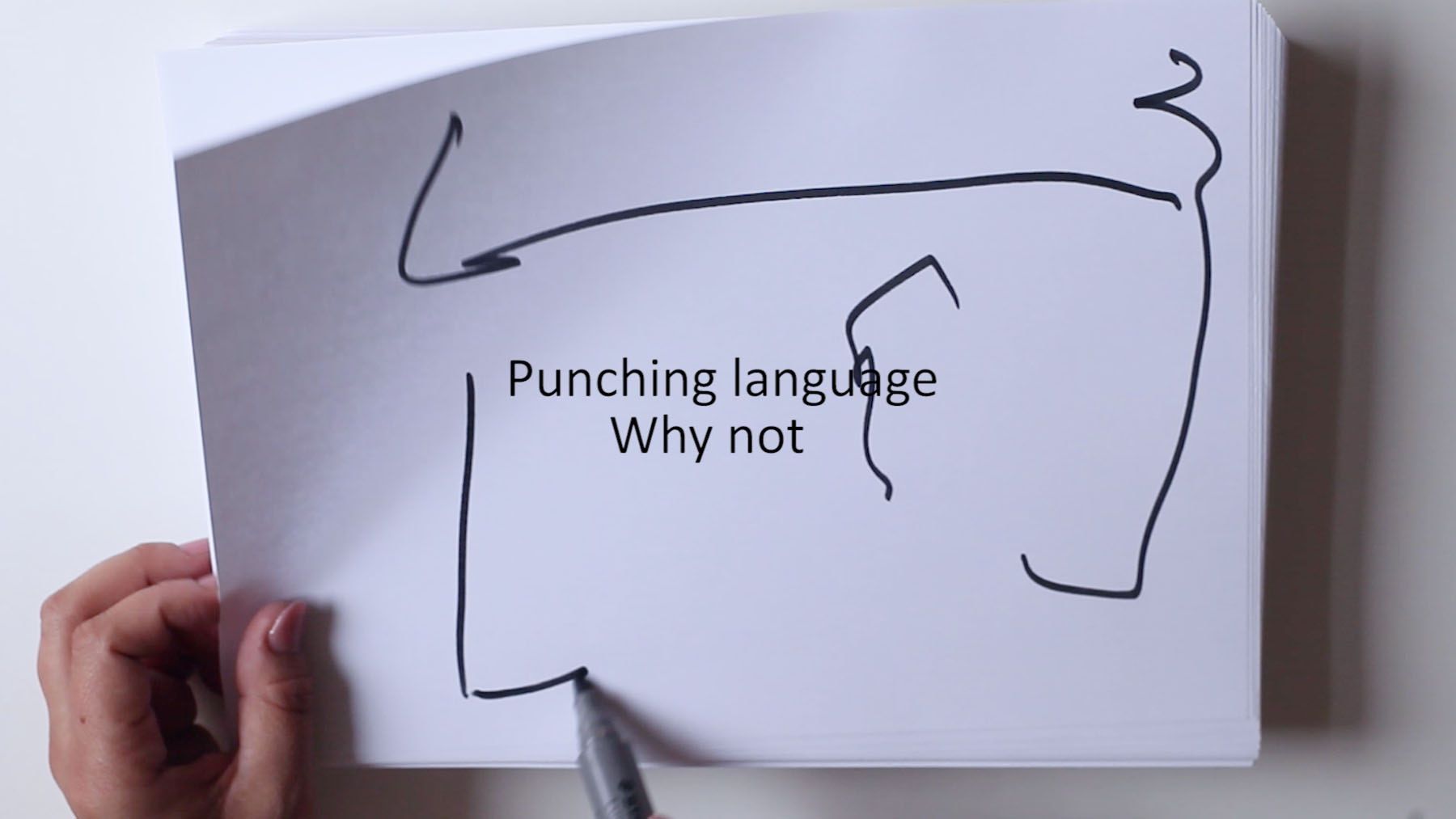Artist: Beatriz Olabarrieta
Exhibition title: Faces
Curated by: Marc Navarro
Venue: Fundació Joan Miró – Espai 13, Barcelona, Spain
Date: December 20, 2019 – March 14, 2020
Photography: Roberto Ruiz / images copyright and courtesy of the artist and Fundació Joan Miró
Beatriz Olabarrieta approaches communication as a discordant phenomenon, in which the voices don’t correspond to the narrative, and the writing doesn’t coincide with any language we recognize. In her proposals, the transmission strategy seems to respond to urgency and precipitation, rather than a communicative intent. The ineffectiveness of this elementary process leads us to scenarios in which the need to speak meets the impossibility of transmitting information efficiently, and language gives rise to the unexpected. When communication no longer transmits remarkable experiences, it becomes a suitable tool for constructing unprecedented experiences. In other words, when language is not limited to its representative function, it can produce anything.
The suspension of our habitual codes transforms written and verbal communication into a complex and arduous gestural exercise, an almost gymnastic effort. That is why translation takes on a choreographic condition in Olabarrieta’s proposals; translation is understood as a space of conciliation, which displays both a domination and a standardization at the same time. This series of protocols that leads us to shift meanings or generate new ones highlights the performativity of communication and invites us to question the poetic and political aspects of translation. In a context of mandatory negotiation between species, between machines and humans, or between artists and institutions, entering a dialogue implies a desire to adapt our vocabulary to parameters that foster familiarity and mutual understanding. It is an adaptation that affects our lexicon and, in its tone and form, our speech.
In Faces, Olabarrieta examines this constant adaptation and reflects on the changing effects of dialogue, on government and the administration of our identities. Our faces have become the interface for accessing an identity that we are constantly reshaping, a framework that we edit conveniently to show ourselves in public or to blend in. Hiding our faces is often interpreted as a suspicious gesture, which merges faceless subjects into an indefinite mass, without an individual presence. When we show our faces, in contrast, when we share them on social media, or when they are analyzed biometrically by facial recognition software, we activate mechanisms of taxonomic identification that work to classify us into dubious categories like gender or mood. Hiding our identity or modifying it to the point of making it invisible situates us on the margins of the institutional, corporate or governmental framework, contexts that are articulated around a stable image that can guarantee representativity and an exemplary public exposure.
Along with our proper names, our faces constitute the essential support for our subjectivity. But aren’t speech and writing processes that also radically define our singularity? For Olabarrieta, the construction of our identity is closely tied to our need for communication, to encounter the other. Based on this premise, she plays on our expectations by introducing red herrings and ambiguous documents into the exhibition space that blur the limits between reality and fiction, between public and private. It is an unmasking which, like our faces, grapples with the natural and the construct, the mythological and the mechanical.
Olabarrieta’s projects infiltrate the exhibition space like a parasitic organism; they adapt to its architecture and modify it by appropriating its language. It is a symbiosis that leads us to confuse the pre-existing architectural conditions with the interventions that can be attributed to the artist. For Faces, Espai 13 is divided by a construction without and “inside” or an “outside”, which subjects our actions and itineraries to its authority. The writer Kathy Acker asserted that all language presupposes a community and that, without the other, nothing people say has any meaning. For Olabarrieta, the loss of language and the impossibility of speech are associated with the fragmentation of a concrete reality.
A deterritorialization that forces us to imagine ways of relating to our surroundings and to exist on the margins of a biographical narrative, the dictates of what is intelligible. Faces invites us to establish relationships between objects and images, drawing on physical and perceptive considerations. It reminds us that imagining less-comfortable ways of reading, seeing and travelling is a necessary push against the perverse use of words and against our own passivity. To keep us aware, we need to learn to speak again, to look beyond what is evident, and to call into question the most appropriate form.
-Marc Navarro Fornós
























